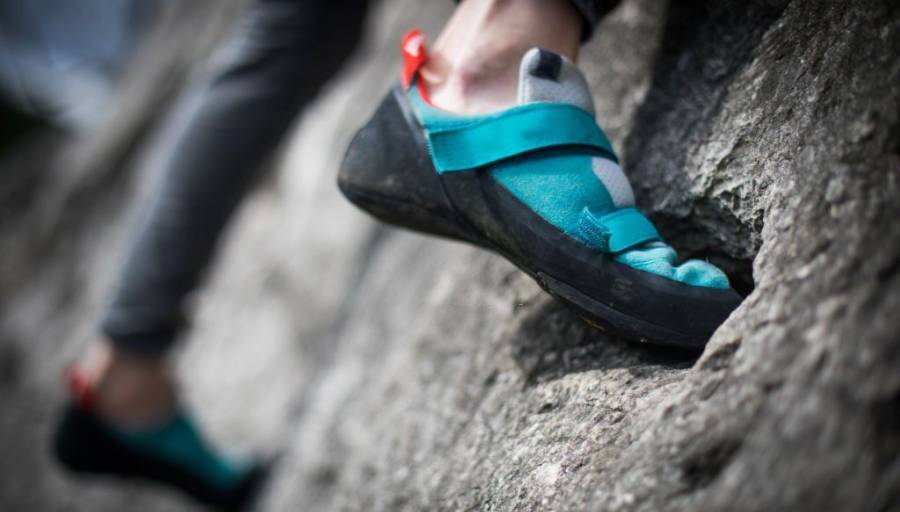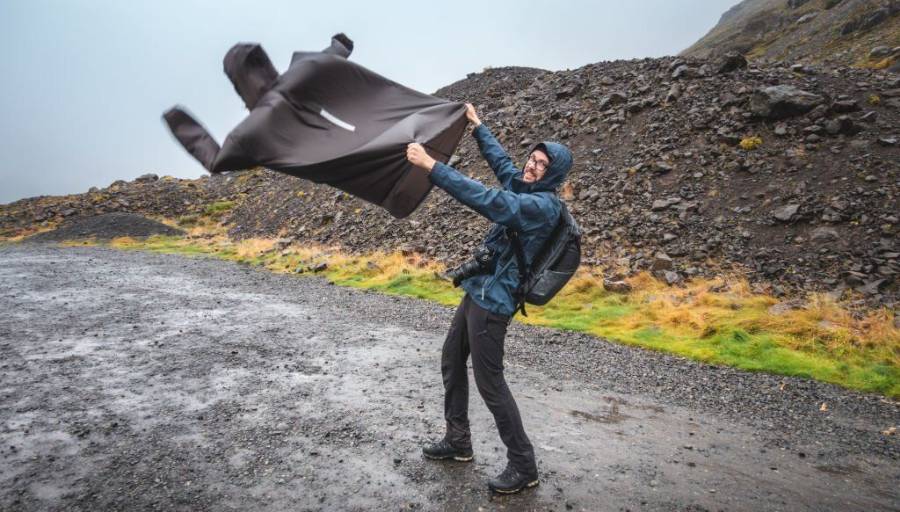Why is cotton bad for hiking?

Cotton is a widely used fabric that is comfortable and versatile for everyday wear. However, when it comes to outdoor activities like hiking, cotton can be a poor choice for clothing. This is because cotton is a hydrophilic material, meaning it absorbs and retains moisture, which can cause several issues during a hike.
In this guide, we will explore why cotton is bad for hiking and why other fabrics are a better choice for outdoor activities in different seasons.
Why Hikers Say Cotton Kills
Hikers say “cotton kills” because cotton is a poor choice of clothing for outdoor activities, particularly in cold or wet weather conditions. The phrase “cotton kills” refers to the fact that wearing cotton clothing in these conditions can lead to discomfort, hypothermia, and even death.
The primary reason why cotton is a poor choice for hiking is because it absorbs and retains moisture, rather than wicking it away from the body. When you sweat, cotton clothing will become saturated with moisture, which can lead to discomfort and chafing. Additionally, if you get wet from rain, snow, or falling in water, cotton clothing will retain that moisture, making you feel cold and uncomfortable.
In cold weather conditions, cotton clothing can be particularly dangerous. When cotton becomes wet, it loses its ability to insulate, which can lead to hypothermia. Hypothermia occurs when your body temperature drops below a safe level, which can lead to confusion, fatigue, and even death.
Hikers also say “cotton kills” because of the risk of getting lost or stranded. If you become lost or stranded in cold or wet conditions, cotton clothing can make it difficult to stay warm and dry, which can be life-threatening.
Overall, hikers say “cotton kills” as a reminder to choose appropriate clothing for outdoor activities. It’s important to choose clothing made from moisture-wicking, quick-drying synthetic fabrics or merino wool, which are better suited for outdoor activities and can help prevent discomfort, hypothermia, and other dangers.
Why Not to Wear Cotton for Hiking
In this part, we will explore the reasons why you should avoid wearing cotton for hiking and the alternative fabrics that are better suited for outdoor activities.
Cotton Retains Moisture
Cotton is a hydrophilic material, meaning it absorbs and retains moisture, making it unsuitable for hiking. When you sweat or get caught in the rain, cotton clothing will absorb the moisture, and it will remain damp for a long time, leading to discomfort and chafing. Additionally, the dampness can lead to a loss of body heat, which can be dangerous in colder weather conditions.
Cotton Takes a Long Time to Dry
Another disadvantage of cotton is that it takes a long time to dry. If you get caught in rain or have to ford a stream, cotton clothing will take a long time to dry, leaving you feeling damp and uncomfortable for an extended period. This can also lead to the development of hypothermia, a potentially life-threatening condition.
Cotton Loses Insulating Properties When Wet
Cotton also loses its insulating properties when wet, making it a poor choice for cold weather hiking. Wet cotton clothing can cause rapid heat loss, which can lead to hypothermia. This is particularly dangerous in colder weather conditions or at high elevations.
Cotton is Heavy and Bulky
Cotton is a heavy and bulky fabric, which can add unnecessary weight to your gear. Carrying heavy and bulky clothing can make the hike more strenuous, leading to fatigue and discomfort. Additionally, the bulkiness can make it challenging to layer clothing, which is essential for staying comfortable in varying weather conditions.
When It Is Okay to Wear Cotton Hiking
There are some situations where wearing cotton may be acceptable, as long as you take precautions to manage moisture and stay dry.
Short Hikes in Dry Conditions
If you’re going on a short hike in dry conditions, cotton clothing may be acceptable. Since you won’t be sweating as much and there is no chance of getting wet, cotton clothing can be comfortable and breathable.
Day Hikes in Warm Weather
If you’re going on a day hike in warm weather, cotton clothing can be acceptable, as long as you take steps to manage moisture. Wearing loose-fitting cotton clothing can help promote airflow, and using a sweatband or headband can help prevent sweat from getting into your eyes. It’s also important to bring extra clothing in case you get wet or need to change due to sweat.
Casual Hiking or Walking
If you’re going on a casual hike or walking on a trail, cotton clothing may be acceptable. Since you won’t be exerting as much energy, the risk of sweating and getting wet is lower. However, it’s still important to bring extra clothing in case of changes in weather or unexpected situations.
Overall, while cotton clothing may be acceptable for some hiking situations, it’s essential to take precautions to manage moisture and stay dry. It’s still recommended to opt for moisture-wicking, quick-drying synthetic fabrics or merino wool when possible, as these fabrics are better suited for outdoor activities and can help prevent discomfort and hypothermia.
What Are the Best Fabrics for Hiking?
For choosing the right fabric for hiking, there are several factors to consider, including moisture management, breathability, insulation, and durability. Here are some of the best fabrics for hiking:
Synthetic Fabrics
Synthetic fabrics, such as polyester, nylon, and spandex, are a popular choice for hiking. These fabrics are designed to wick moisture away from the body, keeping you dry and comfortable during the hike. They also dry quickly, making them ideal for use in varying weather conditions. Synthetic fabrics are lightweight, durable, and easy to care for, making them a great choice for backpackers and frequent hikers.
Merino Wool
Merino wool is another popular choice for hiking clothing. This type of wool is soft, comfortable, and regulates temperature well, making it ideal for use in varying weather conditions. Merino wool is also naturally moisture-wicking, making it a great choice for hikers who sweat heavily. Additionally, merino wool is naturally odor-resistant, which is a bonus for hikers who are on multi-day trips and don’t have access to washing facilities.
Gore-Tex
Gore-Tex is a waterproof and breathable fabric that is commonly used in hiking jackets and pants. This fabric is designed to keep you dry and comfortable during wet weather conditions, while also allowing moisture to escape from the inside. Gore-Tex is lightweight, durable, and easy to care for, making it a great choice for backpackers and frequent hikers.
Polartec
Polartec is a fleece fabric that is commonly used in hiking jackets and mid-layers. This fabric is warm, breathable, and lightweight, making it ideal for use in colder weather conditions. Polartec is also quick-drying and easy to care for, making it a great choice for backpackers and frequent hikers.
Ripstop Nylon
Ripstop nylon is a durable and lightweight fabric that is commonly used in hiking backpacks and tents. This fabric is designed to resist tearing and ripping, making it ideal for use in rugged terrain. Ripstop nylon is also water-resistant, which is a bonus for hikers who may encounter rain or wet conditions.
Overall, when choosing the best fabric for hiking, consider factors such as moisture management, breathability, insulation, and durability. Synthetic fabrics, merino wool, Gore-Tex, Polartec, and ripstop nylon are all great choices for hiking clothing and gear, depending on your specific needs and preferences.
Conclusion
Cotton is a poor choice for hiking and other outdoor activities because it absorbs and retains moisture, rather than wicking it away from the body. This can lead to discomfort, chafing, and even hypothermia in cold or wet weather conditions. Additionally, cotton clothing can make it difficult to stay warm and dry if you become lost or stranded.
When choosing clothing for hiking, it’s important to choose fabrics that are moisture-wicking, quick-drying, and breathable, such as synthetic fabrics or merino wool. These fabrics will keep you dry and comfortable, even in changing weather conditions.
Frequently Asked Questions
Here are some FAQs regarding why cotton is bad for hiking:
Is it okay to wear cotton for hiking in hot weather?
Cotton clothing is okay for hiking in hot weather because it absorbs sweat and keeps you cool. However, you should avoid wearing cotton in wet or humid conditions.
Can I wear cotton underwear while hiking?
It’s not recommended to wear cotton underwear while hiking because it can lead to chafing and discomfort. It’s best to choose moisture-wicking and breathable underwear made from synthetic materials.
Can I wear cotton socks for hiking?
It’s not recommended to wear cotton socks for hiking because they absorb moisture and can cause blisters. Instead, it’s best to choose socks made from moisture-wicking materials such as wool or synthetic fibers.
Can I wear cotton for short hikes?
If you are going on a short hike in dry and mild weather conditions, cotton clothing may be suitable. However, it’s still recommended to wear moisture-wicking and quick-drying fabrics for your comfort and safety.
Why is cotton bad for hiking in cold weather?
Cotton clothing is bad for hiking in cold weather because it loses its insulating properties when wet, which can lead to hypothermia. It’s recommended to wear clothing made from materials that can insulate even when wet, such as wool or synthetic fibers.
Read Also…






